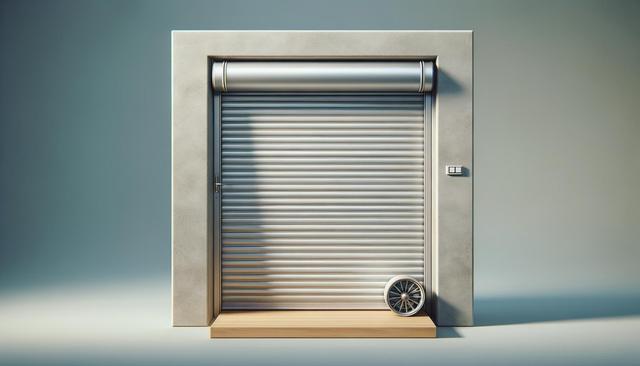Understanding the Basics of Roller Doors
Roller doors, often referred to as rolling doors or shutter doors, are a type of door system commonly used for garages, warehouses, and commercial storefronts. They consist of horizontal slats or panels that roll up into a coil above the opening when raised, making them an excellent choice for areas where space optimization is crucial. These doors are designed to be durable, easy to operate, and generally require minimal maintenance compared to other types of door systems.
Roller doors can be operated manually or through motorized systems, depending on the user’s preference and budget. The materials used typically include steel or aluminum, which offer varying degrees of strength, insulation, and aesthetic appeal. Their simple yet effective mechanism makes them a reliable option for high-traffic environments or locations that require regular opening and closing throughout the day.
Benefits of Installing Roller Doors
There are several reasons why roller doors are a preferred choice for many property owners. Their compact design allows them to be installed in areas with limited headroom or side room, making them ideal for both urban and industrial settings. Moreover, they provide a high level of security against unauthorized access and environmental elements.
Some key advantages include:
- Space-saving design that maximizes usable area
- Enhanced security due to solid construction and lockable features
- Insulation options that help with temperature control and noise reduction
- Customizable finishes and colors to match different architectural styles
Roller doors are also known for their resistance to wind and weather, which makes them suitable for regions prone to harsh climates. Additionally, many modern models come with safety features such as auto-reverse functions and photo-eye sensors to prevent accidents and ensure smooth operation.
Types of Roller Doors Available
Depending on the specific needs of your property, there are various types of roller doors to choose from. Each type caters to different requirements in terms of functionality, insulation, and aesthetics. The most common types include:
- Single-skin roller doors: Basic models made from one layer of metal, ideal for internal or low-security applications
- Insulated roller doors: Designed with foam-filled slats for improved thermal and acoustic insulation
- Perforated roller shutters: Allow visibility and airflow, commonly used for retail storefronts
- High-speed roller doors: Used in industrial settings where quick access is necessary
Choosing the right type depends on factors such as frequency of use, desired security level, and whether insulation is a priority. Consulting with a specialist can help determine the most appropriate solution for your specific situation.
Installation Considerations
Installing roller doors involves more than just selecting a model and mounting it to the wall. Proper installation is key to ensuring the door functions correctly and remains safe over time. Factors such as the size of the opening, wall structure, and power supply (for motorized models) must all be taken into account.
Before installation, it’s important to:
- Measure the space accurately to ensure a proper fit
- Evaluate the structural integrity of the mounting surface
- Decide between manual or electric operation
- Plan for future maintenance and accessibility
Professional installation is often recommended to avoid potential issues and ensure compliance with safety standards. Technicians can also provide guidance on maintenance routines and troubleshooting common problems, which can extend the lifespan of the door and prevent costly repairs.
Maintenance and Longevity
Maintaining roller doors is relatively straightforward, but regular checks and servicing can significantly enhance their longevity. Like any mechanical system, roller doors are subject to wear and tear, especially in high-use environments. Lubricating moving parts, checking for alignment, and cleaning the tracks are all simple tasks that can prevent major issues down the line.
Key maintenance tips include:
- Inspect for rust or corrosion, particularly on steel models
- Ensure tracks are clear of debris and obstructions
- Test the balance and tension of the door regularly
- Schedule professional servicing annually or bi-annually
By following these practices, property owners can enjoy long-term performance and avoid disruptions caused by malfunctioning doors. Many manufacturers also offer service packages or warranties that cover periodic maintenance, which can be a worthwhile investment.
Conclusion
Roller doors offer a versatile and secure solution for various property types, from private garages to busy commercial facilities. Their compact design, ease of use, and customization options make them a practical choice for those looking to improve access and security. Whether you’re installing a new door or upgrading an existing one, understanding the different types, installation requirements, and maintenance needs can help you make an informed decision that adds long-term value to your property.




Leave a Reply